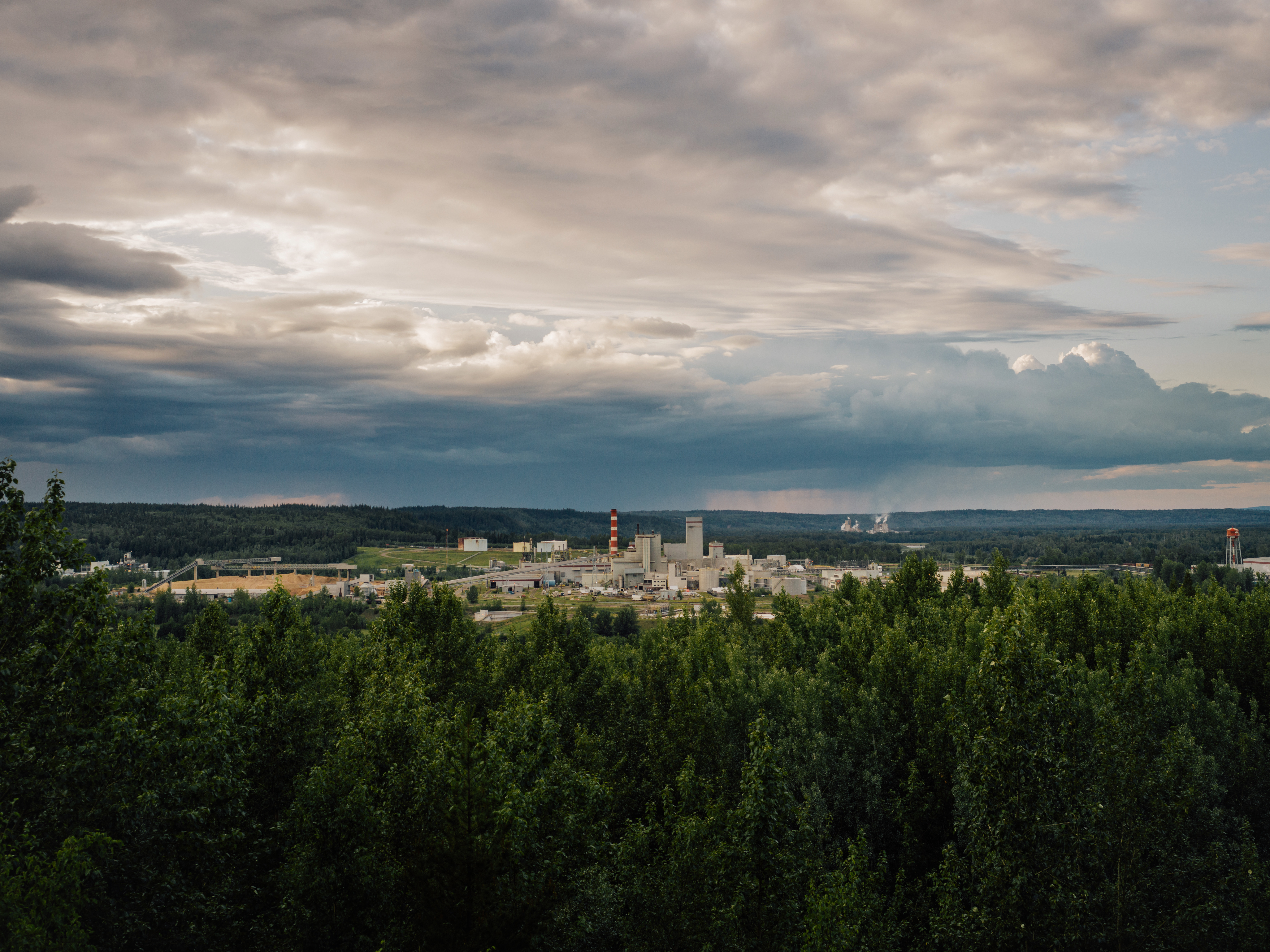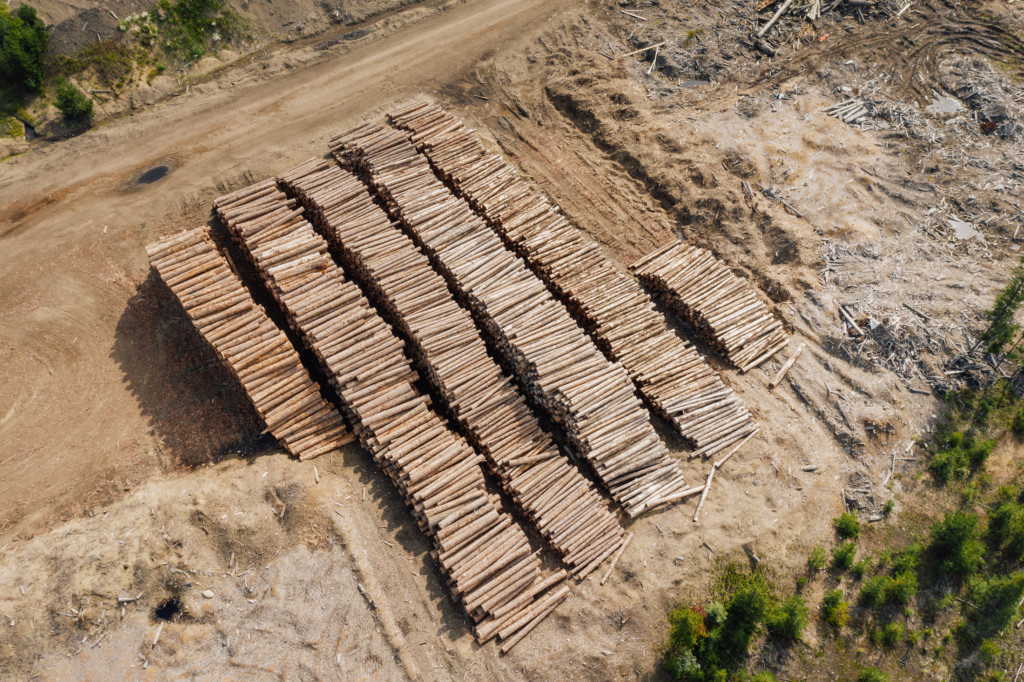
Canada’s fossil fuel companies win battle against climate transparency
Financial regulators hit pause this week on a years-long effort to force corporations to be...
Amid devastating mill closures in the B.C. communities of Chetwynd, Houston and Prince George, and warnings of declining timber supply, B.C. Premier David Eby recently announced his government’s latest forestry measures, including a $180 million fund to support innovation and job creation in the sector and $50 million to increase fibre supply.
We’ve been here before. Many times. Fears of a dwindling timber base and job losses that feel so immediate today go back almost a century.
What have politicians, communities, scholars, environmentalists and policy wonks called for in response? Consistently, versions of the same thing: more selective logging that protects biodiversity and endangered species and more local manufacturing to generate more jobs and money. Eby says he will deliver.
But these solutions to B.C.’s forestry problems — which are also outlined in the 2020 old-growth forest strategic review — have been known for decades. So, why haven’t these changes been implemented?
There are two primary obstacles. The first is B.C. forestry is dominated by a coalition of forestry companies, unions and the B.C. government — what political scientist Jeremy Wilson called the “wood exploitation axis.” The axis has persisted through boom and bust, for a good hundred years.
Today, First Nations have effectively pushed the B.C. government to share some revenue from forestry on their territories and many are partnering with forestry companies, with some taking significant ownership stakes. But, for the most part, the wood exploitation axis remains dominant. The unions, companies and government don’t see eye to eye on everything, but they share a financial interest in maintaining abundant, free-flowing fibre and, for the unions, to maintain good mill and harvesting jobs.
This free-flowing fibre has delivered vast wealth to not only to corporations but also the B.C. government, who has acted over decades to protect revenue even when there are significant impacts to biodiversity and Treaty Rights.
Take Canfor’s Tree Farm Licence 48. It’s a 643,000-hectare harvest area in the middle of endangered central mountain caribou habitat in Treaty 8 — West Moberly and Saulteau First Nations territory in northeastern B.C. Appellate courts have repeatedly recognized government-authorized industrial activity is driving caribou decline in the region, violating the treaty. Forestry is the leading cause of caribou decline here, but in Tree Farm Licence 48 Canfor’s annual harvest has almost doubled since the federal government passed the Species At Risk Act in 2002, which is also when central mountain caribou were listed as threatened. From 2002-2021, the B.C. government collected an average of $7.6 million per year in stumpage from this license.

For its part, we’ve learned Canfor has been so profitable it was able to invest over a billion dollars in the southern U.S. and Scandinavia in the last decade, while our research with economist Robyn Allan has found Canfor’s effective tax rate in B.C. over the past two decades has been half the statutory rate.
With licences to over nine million cubic metres, Canfor is the largest of the five forestry companies which control more than half of B.C.’s harvestable fibre. This concentration of tenure has been acknowledged as a problem for decades, most recently by the ruling NDP themselves, who in 2021 passed Bills 23 and 28, which open the door to redistributing this tenure to First Nations and communities. But dividing up forest tenures does not appear to be a priority in the recent announcements. Ownership, power and benefits remain concentrated in corporate and provincial government hands. This has long constrained what is possible and there is no reason to think it won’t continue to do so.
The second obstacle to change is the constant threat of capital flight, the fear of investment moving to other, often cheaper, parts of the world. B.C.’s business council commentators and equity analysts describe our province as “essentially un-investable across most segments of the forest products business.” Forest companies and their allies point to higher operating costs (think environmental regulations and secure, decently paid jobs) and reductions in the fibre supply (think flood control and endangered species protections) as reasons for why B.C. forestry is what they call “the least attractive investment climate in North America.”
The thing is, the B.C. government has been trying to make its forests investable for decades. Yet, those same decades are marked by mill closures, job losses and capital flight. Even when the “lean” and investor-friendly B.C. Liberal government deregulated forestry and spent billions in forest-sector subsidies in the 2000s, the sector still lost over 40,000 jobs — not because of declining harvest.
In 2001, 1,266 people in B.C. were employed per million cubic meters logged, according to Statistics Canada data. By 2019, we found the number employed had dwindled to 908.
This is because the kind of forest many people want and the government talks about building and protecting — a forest that provides decent public return, plentiful well-paid jobs and wildlife habitat — is an un-investable forest in today’s global economy. Firms continually chase reduced labour costs and less burdensome environmental regulation. It is a pipe dream to imagine we can have the kind of forest sector demanded by big international capital and an abundant, well-paid workforce and healthy old-growth ecosystems.


For at least six decades, the B.C. government has managed forestry crises by ramping up public expenditures to try to entice corporate forest giants to stay. This time looks no different. Based on the federal office of the auditor general’s definition of a subsidy, we calculate that 89 per cent of B.C.’s funding announcements for the forestry sector since the new year are subsidies.
It’s time for B.C. to quit the race to the bottom — you know, the one that has sought reduced wages and jobs (through labour demonization and automation) and weak environmental regulations, and has pushed the average global statutory corporate tax rate from 40 per cent in 1980 to 24 per cent in 2020. Forget that kind of global investability. Instead of begging Canfor to stay, reassign their forest tenures to Indigenous nations, communities and a more diverse set of smaller businesses committed to B.C. for the long term.
This doesn’t mean closing B.C. off from the wider world.
On the contrary, the problems facing B.C. are connected to the problems facing other countries in this era of unchecked, footloose capital. This is why the world’s leading scientific experts say that solving environmental problems requires transformative change — systemic overhaul, not just tinkering at the edges. In line with international scientific consensus, the route to a just and sustainable forest economy in B.C. means we can’t solve these problems at the provincial or even the national scale. The problem is also global, requiring changes to global trade and investment rules and norms. To start, we need to increase and harmonize tax rates so the wealthy and big businesses pay their fair share.
We also need to dislodge the overemphasis on market value (also known as investability) that drives global biodiversity loss. B.C. can itself chip away at this pattern domestically, including through existing plans like support for local economic transition and industrial transformation. We would add others like diversifying tenure, implementing a wealth tax and adopting First Nations’ defined GDP-alternatives so the province’s economic health is measured in ways that reflects social and ecological well-being, not simply quantities of capital flow. B.C. should get on with the work of transformation, guided by a commitment to see the forest for so much more than two-by-fours.
Sound utopian? It’s more realistic than a government who says it wants to do things truly differently while also being a good place for big capital investment, when that means the opposite of what we all want.
Get the inside scoop on The Narwhal’s environment and climate reporting by signing up for our free newsletter. When I visited my reserve, Moose Factory,...
Continue reading
Financial regulators hit pause this week on a years-long effort to force corporations to be...

The Conservative and Liberal parties diverge sharply on Indigenous issues. Here’s what that could mean...

After a series of cuts to the once gold-standard legislation, the Doug Ford government is...

